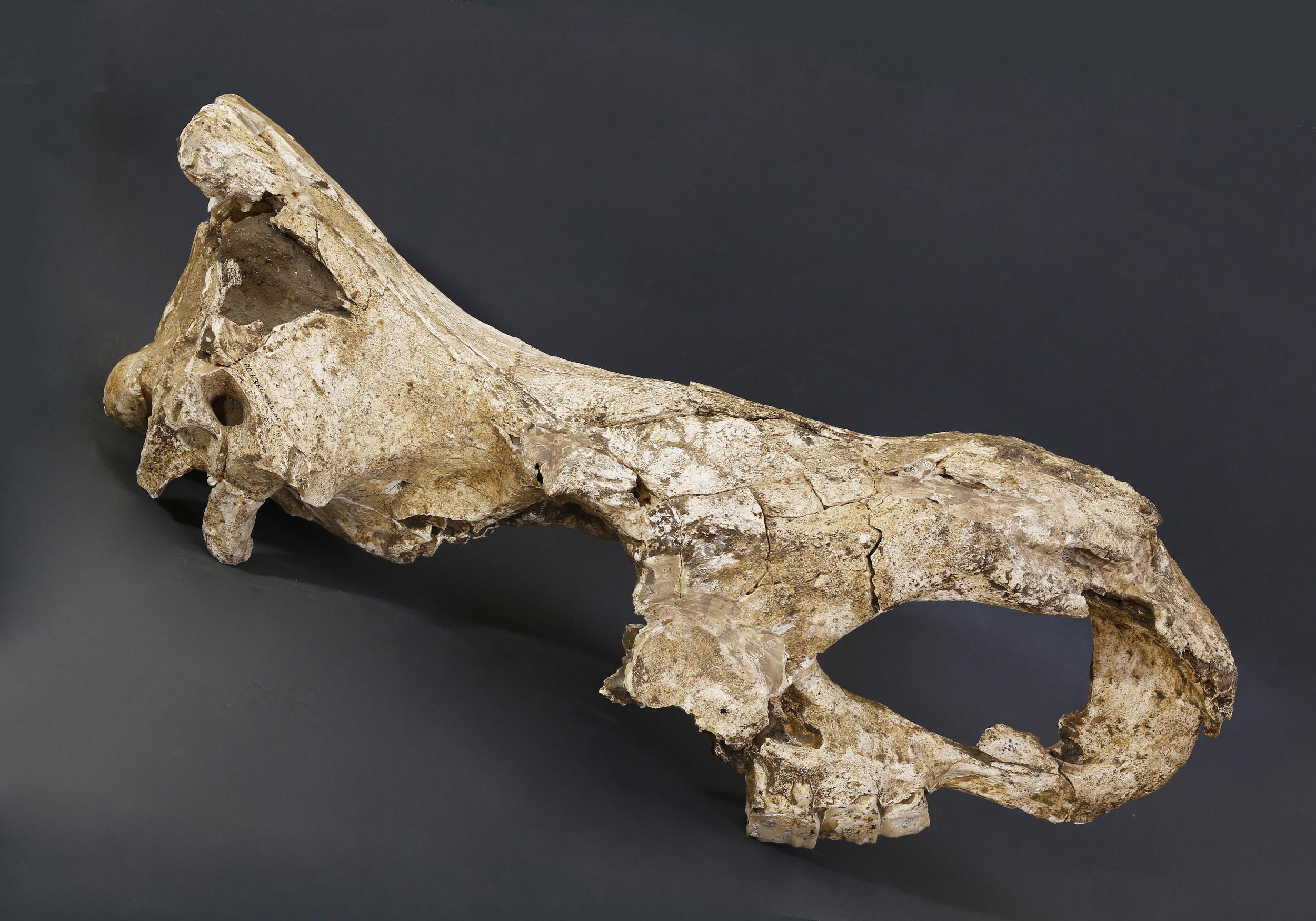Scientists extract oldest ever genetic information from 1.7 million-year-old rhino tooth
‘We have a solution that allows us to generate information beyond the limit of ancient DNA and can be applied to any large mammal species’

Your support helps us to tell the story
From reproductive rights to climate change to Big Tech, The Independent is on the ground when the story is developing. Whether it's investigating the financials of Elon Musk's pro-Trump PAC or producing our latest documentary, 'The A Word', which shines a light on the American women fighting for reproductive rights, we know how important it is to parse out the facts from the messaging.
At such a critical moment in US history, we need reporters on the ground. Your donation allows us to keep sending journalists to speak to both sides of the story.
The Independent is trusted by Americans across the entire political spectrum. And unlike many other quality news outlets, we choose not to lock Americans out of our reporting and analysis with paywalls. We believe quality journalism should be available to everyone, paid for by those who can afford it.
Your support makes all the difference.Scientists have extracted the oldest genetic information ever found from a 1.7-million-year-old rhino tooth, using a technique that has been described as a “game-changer” which could revolutionise our understanding of evolution.
Using mass spectrometry, scientists were able to sequence proteins and read genetic data that was previously unobtainable using DNA testing. This means they could accurately reconstruct evolution from further back than ever before, according to the paper published in Nature.
Researchers from the University of Copenhagen and the University of Cambridge identified an almost complete set of proteins in the dental enamel of the extinct Stephanorhinus, which lived in what is now Georgia during the Pleistocene period.
Proteins are chains of building blocks made of amino acids. Scientists use mass spectrometry to reconstruct the sequence of the amino acids, which allows them to understand an organism’s key genetic information.
“We have a solution that allows us to generate information beyond the limit of ancient DNA and this can be applied to technically any large mammal species,” lead researcher Professor Enrico Cappellini from the University of Copenhagen told The Independent.
“For 20 years ancient DNA has been used to address questions about the evolution of extinct species, adaptation and human migration but it has limitations. Now for the first time we have retrieved ancient genetic information which allows us to reconstruct molecular evolution way beyond the usual time,” he said.
“This new analysis of ancient proteins from dental enamel will start an exciting new chapter in the study of molecular evolution.”

Before this discovery, the earliest DNA sequenced was from a 700,000-year-old horse. Currently DNA data tracks human evolution to the last 400,000 years but lineages that led to the modern humans and chimps branched between 6 and 7 million years ago.
This means scientists have no genetic information for more than 90 per cent of the evolutionary path that led to modern humans. For example, the genetic links between modern humans and the extinct Homo erectus are still not known because everything is based on anatomical – as opposed to genetic – information.
This is because DNA degrades – unless specimens are preserved in permafrost – after approximately 500,000 years. In contrast, proteins can last millions of years and using mass spectrometry scientists can individually identify proteins and work out how old they are.
“Mass spectrometry-based protein sequencing will enable us to retrieve reliable and rich genetic information from mammal fossils that are millions of years old, rather than just thousands of years old,” said co-author Professor Jesper Olsen from the University of Copenhagen.
“It is the only technology able to provide the robustness and accuracy needed to sequence tiny amounts of protein this old.
“Dental enamel is extremely abundant and it is incredibly durable, which is why a high proportion of fossil records are teeth.”
Scientists say the discovery could lead to massive shifts in our understanding of how the world has evolved.
“This research is a game-changer that opens up a lot of options for further evolutionary study in terms of humans as well as mammals. It will revolutionise the methods of investigating evolution based on molecular markers and it will open a complete new field of ancient biomolecular studies,” said lead author on the paper Professor Eske Willerslev from the University of Cambridge.
Join our commenting forum
Join thought-provoking conversations, follow other Independent readers and see their replies
Comments